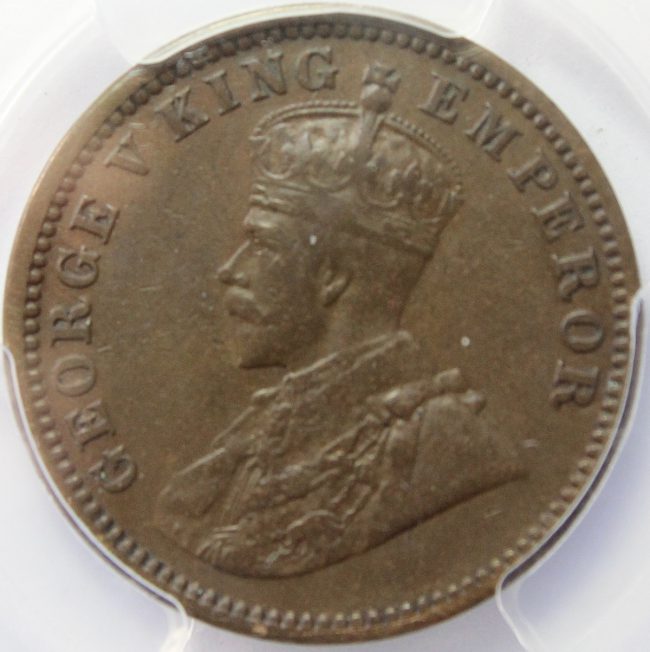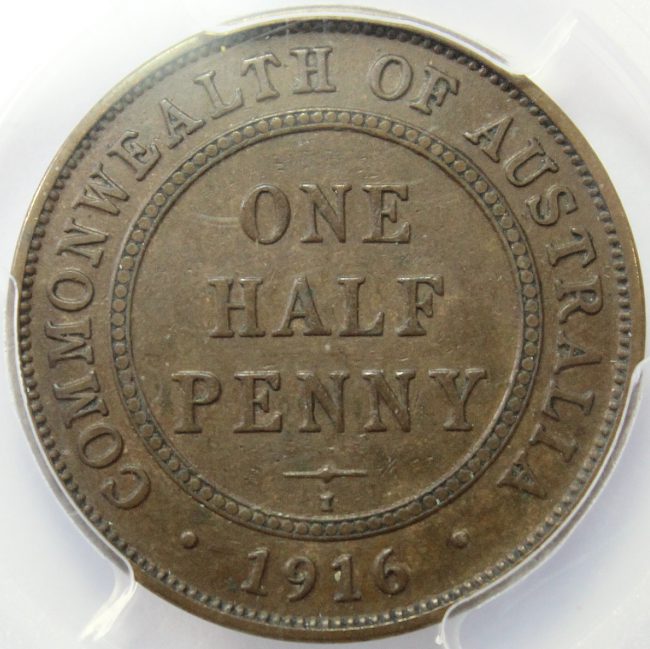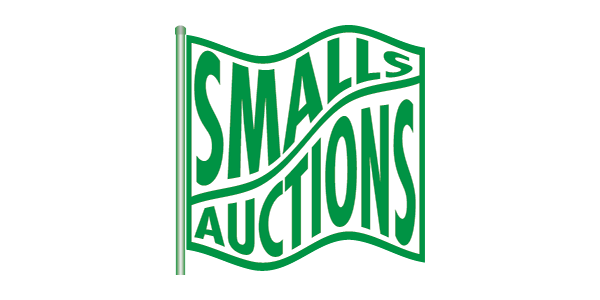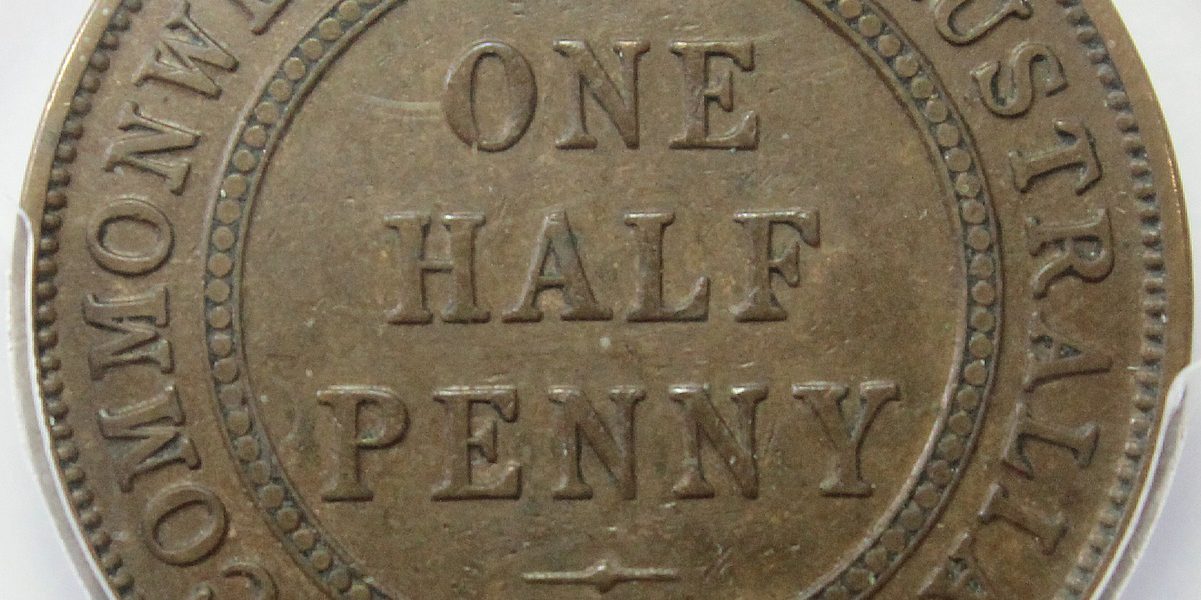The 1916 ‘Mule’ Halfpenny – the kick is in the tale
Britain’s London Mint produced coins for many nations especially its past and present colonies, which is why it was responsible for striking Australia’s first halfpenny in 1911. However, there were times when it couldn’t meet production demands and so it would sub-contract work to its branch mints or even private mints. For example, the private Heaton Mint in Birmingham struck the entire mintage of Australian halfpennies in 1912 and 1915 on marked working dies supplied by the London Mint and it also shared production of the 1914 halfpennies with London. The London Mint as the senior mint never marked its coins but all the Heaton Mint coins were distinguished by a ‘H’ mint mark.
The Melbourne Mint took over the striking of Australia’s silver coins in 1916 on working dies also supplied by the London Mint which were marked with an ‘M’ mint mark, but it was not yet thought capable of producing the larger and harder bronze coins. So, when supply lines from London were stretched with the outbreak of World War I, the Calcutta Mint was called upon to strike halfpennies and pennies for Australia during the war years of 1916, 1917 and 1918 all identified by the ‘I’ mint mark.
However, in 1916 the Calcutta Mint was also producing Indian Quarter Anna coins for local use and in a major production bungle an obverse of the Indian coin was paired with a reverse of the Australian Halfpenny resulting in the infamous 1916 ‘Mule’ Halfpenny. In nature a ‘mule’ is the result of the sterile pairing of a donkey and a horse and in numismatics the term was adopted for the clashing of two dies that should never have come together.
There is anecdotal evidence that a collector first discovered a 1916 ‘Mule’ Halfpenny in his collection in the early 1930s without realising its significance, and it was this coin that was re-discovered in the Koschade Collection in July 1965. The publicity started a treasure hunt and a few other examples were unearthed in Adelaide and Melbourne while in Sydney an astute collector picked one up for threepence from an unsuspecting coin dealer in Bathurst St, Sydney.
Unsurprisingly, their public unveiling some 50 years after they were struck was met with skepticism by some coin ‘experts’ but the fact that the ‘Mule’ emerged randomly across Australia with little or no monetary benefit would attest to them being a genuine mint error rather than an elaborate hoax. As well as this, all known examples exhibit many decades of circulation except the Koschade coin which was reportedly put away in the 1930s and now survives in about Uncirculated condition. When you think about it, the 'Mule's' late discovery is not unusual in Australian numismatics as the misspelt 1858 Sydney Mint ‘Halfsovrreign’ went unnoticed until the mid-1990s.
As would be expected, the 1916 ‘Mule’ Halfpenny was the product of one pairing of dies, as on the reverse they all bear a small pimple on the inner concentric circle above the ‘N’ of ‘ONE’. Of the 3,600,000 regular 1916 Halfpennies struck only a very small percentage bear this pimple and so it is probable that just one reverse die bore this flaw. This aligns with the theory that the Quarter Anna die was very quickly discovered and was replaced with a normal obverse die which in tandem with the reverse used on the ‘Mule’ went on to produce perhaps an additional 30,000 circulating coins.
How many were struck before the mistake was discovered is unknown, but it is undoubtedly a major mainstream rarity in the Australian series. There are about ten examples of the ‘1916 Mule Halfpenny’ accepted as genuine with probably a few more sitting in old collections that are yet to be discovered. The 1916 ‘Mule’ Halfpenny PCGS XF40 in our Sale is an exceptional coin with a full-band on the obverse portrait and is the highest third-party graded coin and probably the second finest known.



